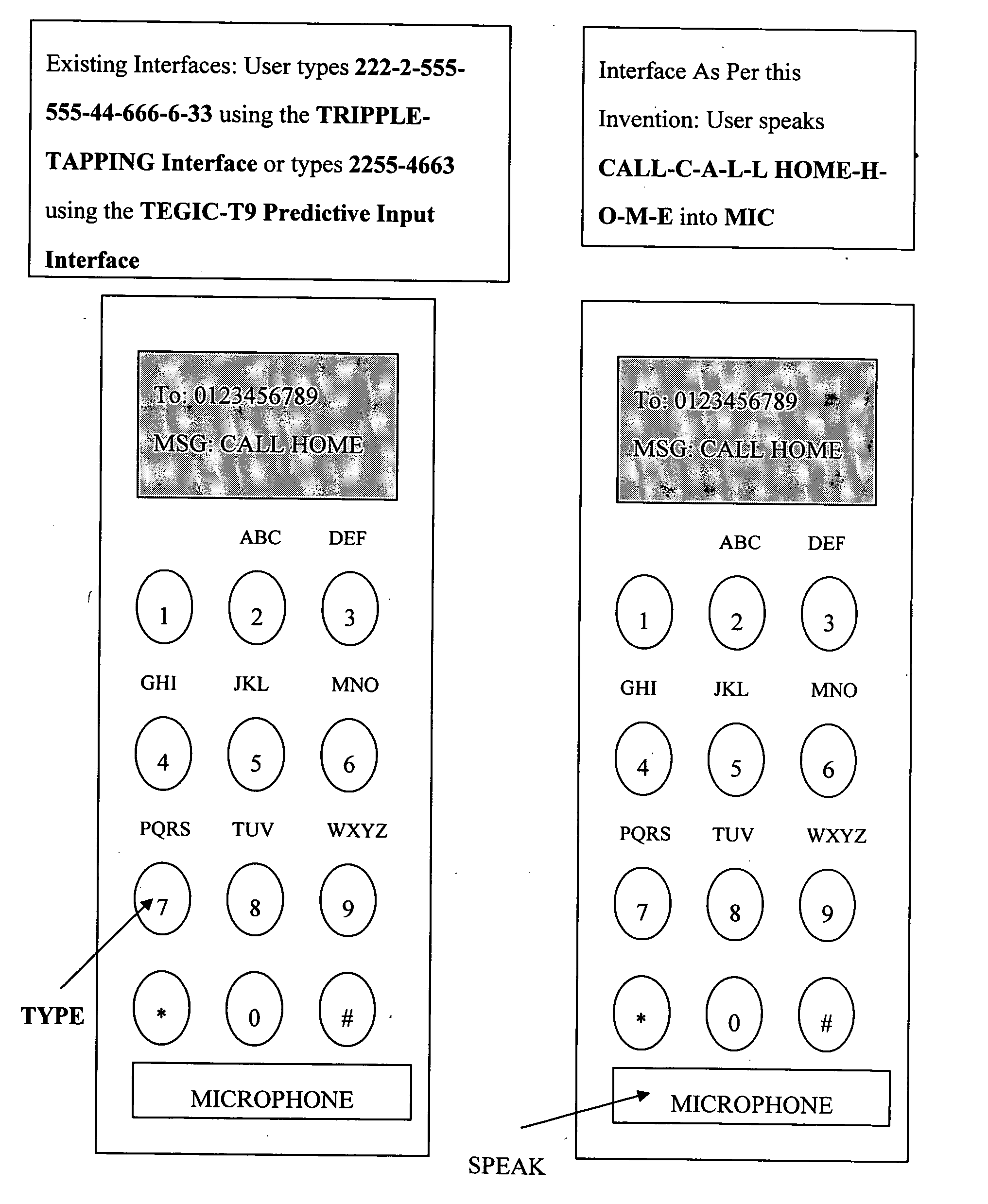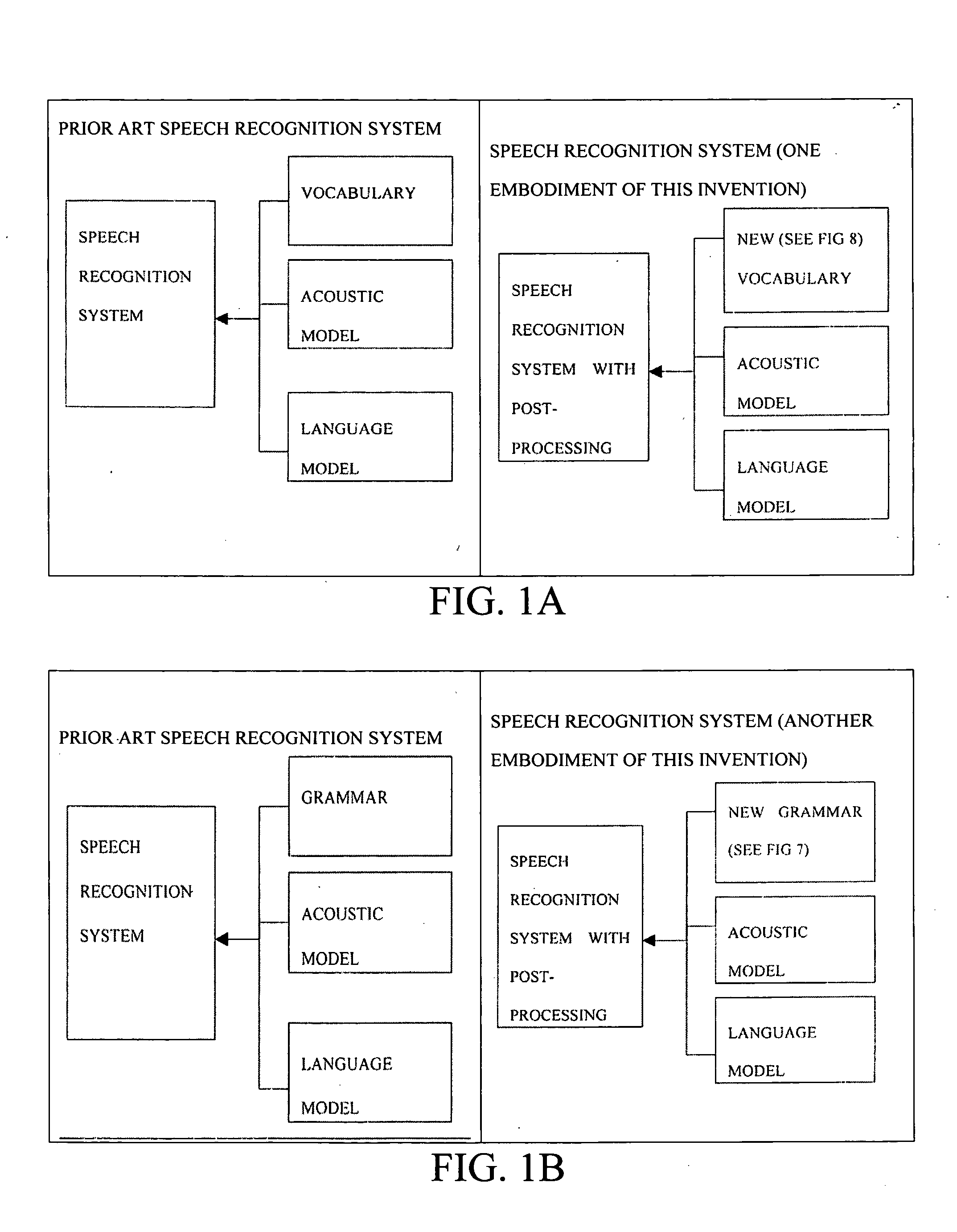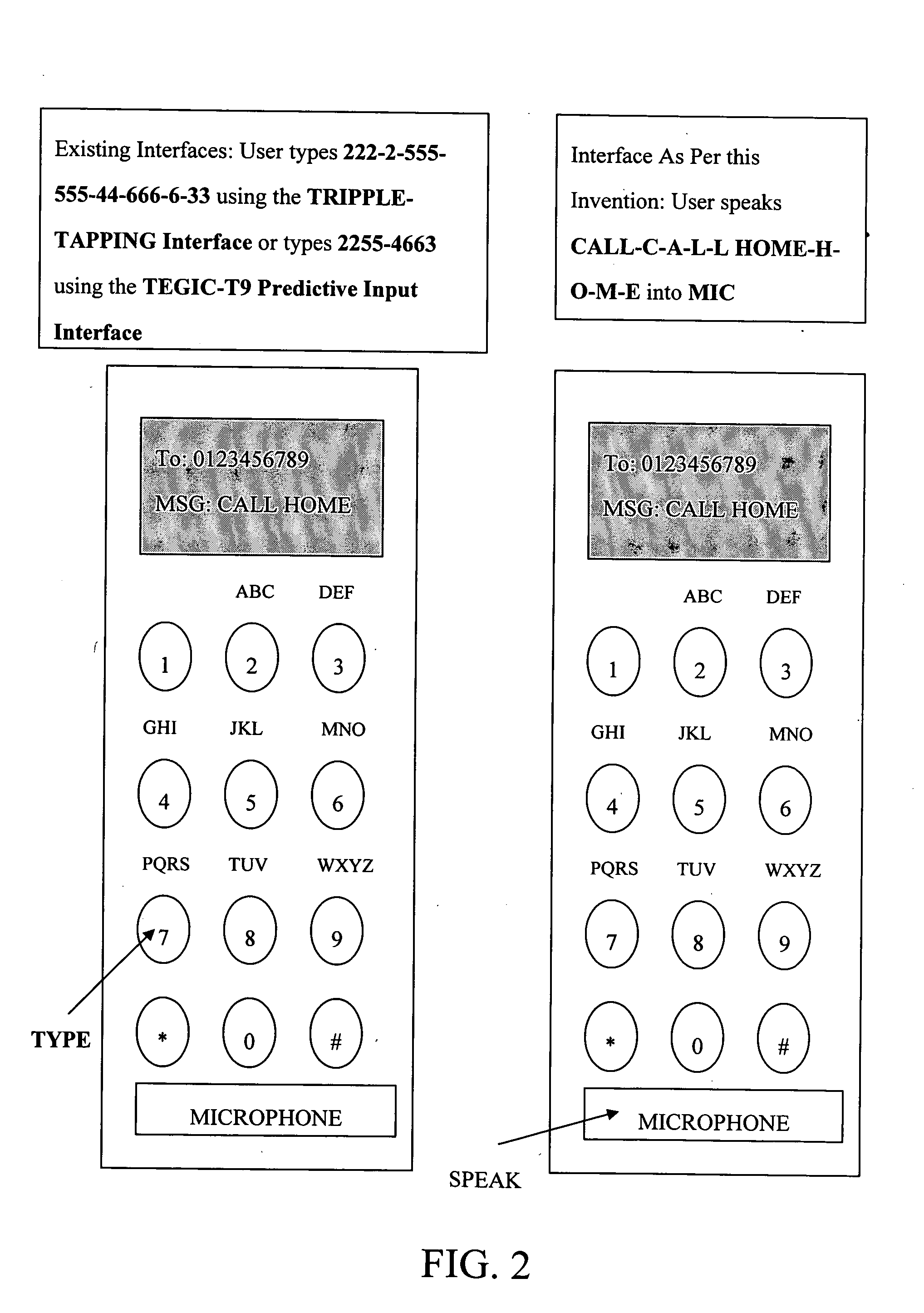System and method for computer recognition and interpretation of arbitrary spoken-characters
- Summary
- Abstract
- Description
- Claims
- Application Information
AI Technical Summary
Benefits of technology
Problems solved by technology
Method used
Image
Examples
Embodiment Construction
[0011] It will be appreciated by those skilled in the art and others that a typical speech recognition system (also referred to as an Automatic Speech Recognizer or ASR) consists of accessing the audio data through a microphone-soundcard combination, processing the audio using a front-end signal processing module to generate feature-vectors, and subsequently doing pattern-matching in the search module; using knowledge from acoustic-model(s) and language-model(s). The system itself may reside as software or may be implemented on a computing device such as a conventional embedded system; and thus may include memory (ROM, RAM etc.), storage, processors (fixed-point, floating-point etc.), interface ports, and other hardware components.
[0012] In one embodiment of the invention, a speech recognition system for recognizing and interpreting arbitrarily spoken characters (in any character-based language), that relaxes constraints specific to remembering words (and their respective pronuncia...
PUM
 Login to View More
Login to View More Abstract
Description
Claims
Application Information
 Login to View More
Login to View More - R&D Engineer
- R&D Manager
- IP Professional
- Industry Leading Data Capabilities
- Powerful AI technology
- Patent DNA Extraction
Browse by: Latest US Patents, China's latest patents, Technical Efficacy Thesaurus, Application Domain, Technology Topic, Popular Technical Reports.
© 2024 PatSnap. All rights reserved.Legal|Privacy policy|Modern Slavery Act Transparency Statement|Sitemap|About US| Contact US: help@patsnap.com










